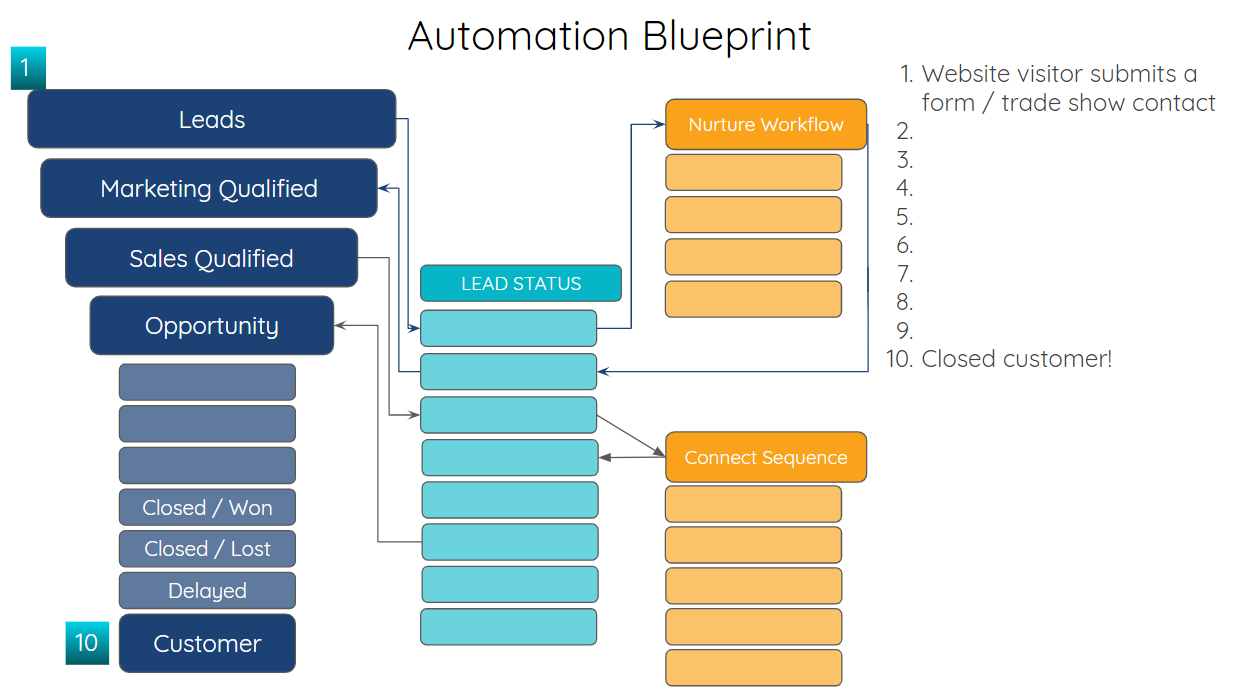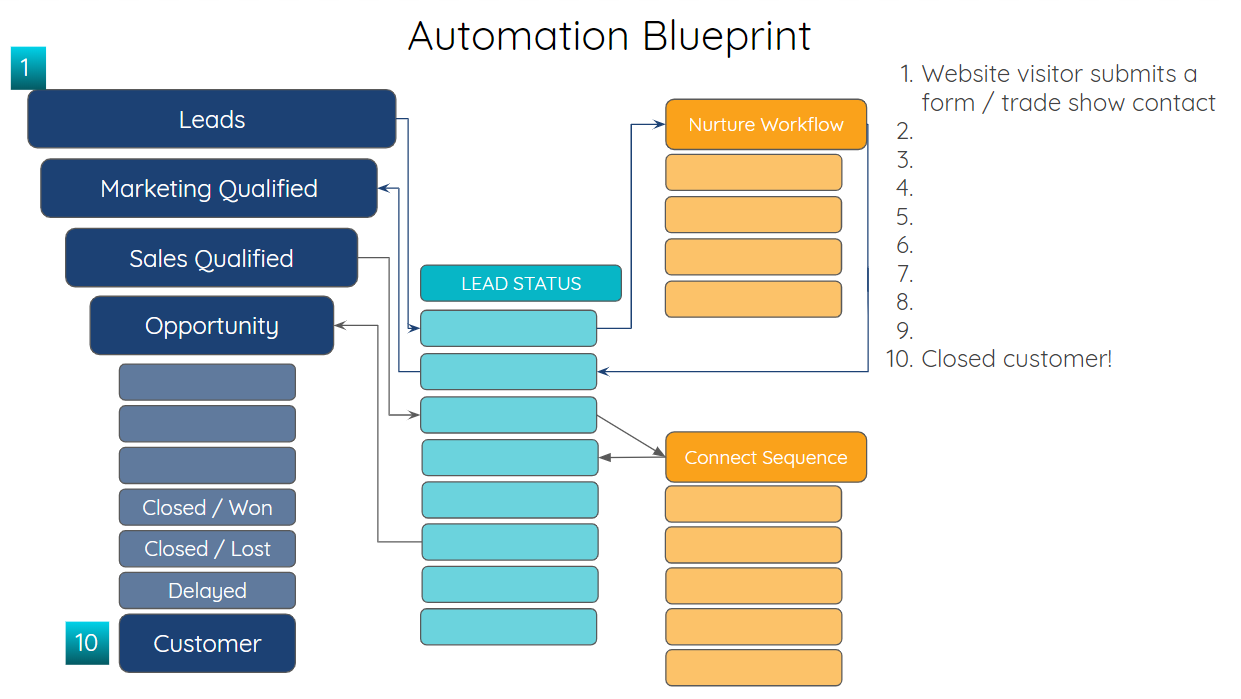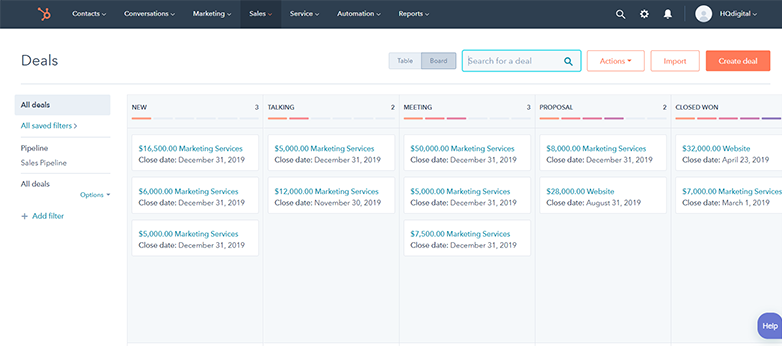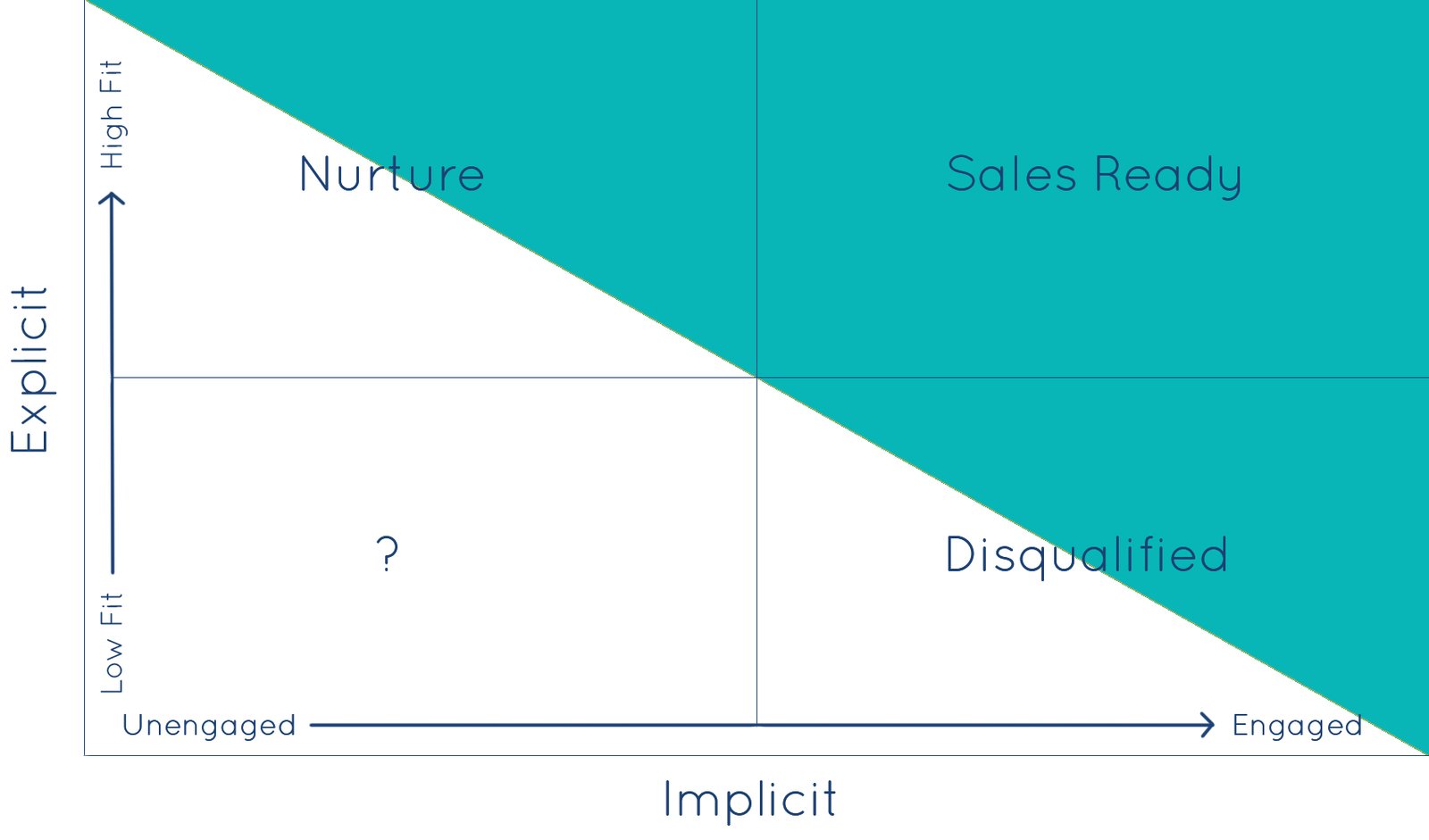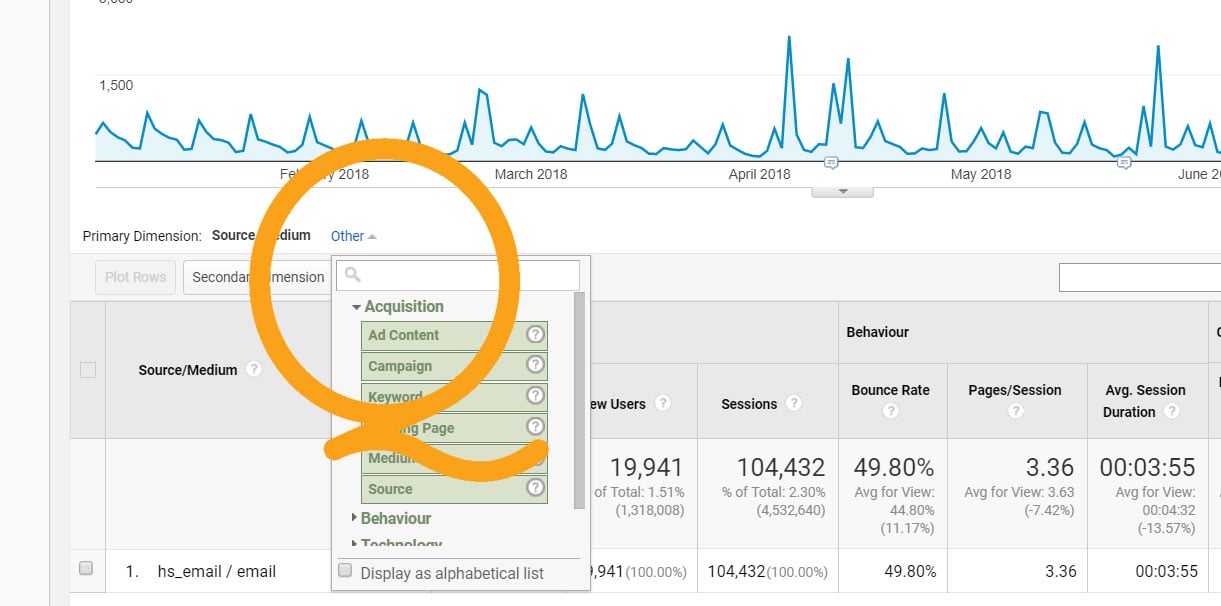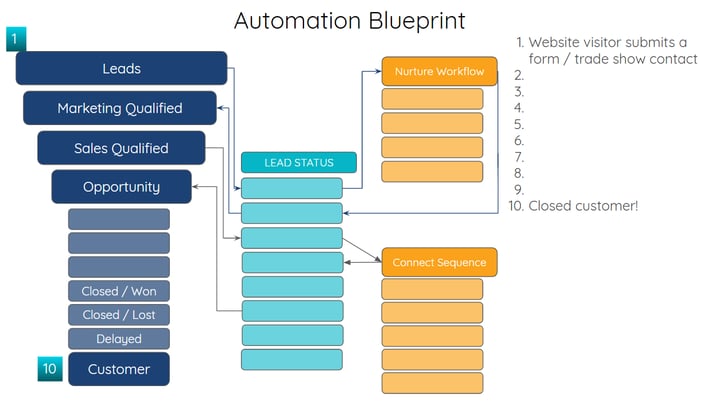
Setting yourself up for success within HubSpot is a critical process. HubSpot contains a powerful set of tools to help increase lead generation and customer acquisition, but it's not a magic button that is ready to go from the gate. You need to properly configure your system to make it work well for your organization, and that starts with properly mapping your sales process using lifecycle stages, lead statuses, and deal stages.
Sales process mapping means laying out the full funnel journey that users take from first touch to closed customer so that you can overlay automation technology and gain efficiencies.
Mapping your sales process in HubSpot starts with setting up three core components:
Today we'll walk through each of these, learn more about them, and discover how they work together to paint a full, optimized picture of your marketing and sales funnel.
What Are HubSpot Lifecycle Stages?
HubSpot lifecycle stages are a set of default stages that a potential customer moves through as they work through your marketing and sales process.
Utilizing and updating the lifecycle stage property consistently allows your organization to know where a specific contact is in your process and better understand how leads are handed off between marketing and sales.
HubSpot lifecycle stages are fixed, meaning that you can't change them. If you really need to add or modify the default stages, you can create a custom property for something like "True Lifecycle Stage" and go off of that.
Otherwise, these are the lifecycle stages that you'll be working with in your HubSpot portal.
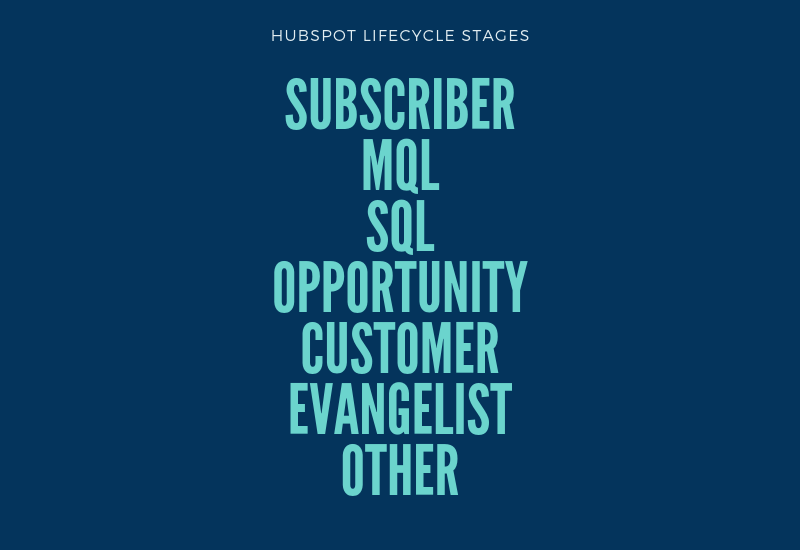
Subscriber
A subscriber is someone who has subscribed to your blog. Simple. A subscriber is at the very tippy-top of the funnel, before they've even downloaded any content from you. Your blog subscribers have put a hand up to receive your blog content, but nothing further. They are interested in educational content that aligns to the awareness stage of their buyer's journey.
If you import a list of contacts into HubSpot, their lifecycle stage will set to subscriber by default.
Lead
In HubSpot, a lead is any contact who converts on a form, other than a blog subscription. A lead is the next stage in your marketing funnel. This stage represents any individual who has volunteered to receive content from you, usually in the form of a top-of-funnel content marketing download. Leads are understood to have shown at least an initial interest in your company's products or services.
MQL
MQL stands for marketing-qualified lead, and it means a lead that the marketing team has agreed is qualified to hand off to sales for further qualification by the sales team. Every company defines a marketing-qualified lead slightly differently, but there are some concrete actions you can set in HubSpot to automate moving someone from a lead to a marketing-qualified lead.
An MQL, by definition, should be initially qualified in some way so as not to waste your sales team's time. For example, you'd want to exclude job inquiries or competitors from entering your sales funnel. A stamp of MQL can actually help disqualify rather than qualify leads.
SQL
SQL stands for sales-qualified lead, and it means a lead that sales has now qualified for itself and has accepted. Like the MQL designation, every sales team has a unique idea of what makes leads sales qualified, and you can set some things in HubSpot to automate the process. This is a lifecycle stage that happens once the lead has moved through your marketing funnel and has transitioned into your sales process.
At this point, your contact should get a value for their lead status. We'll get into more detail below, but the lead status should align with your sales process and likely will include some combination of new lead, working/open, qualified, recycle, and disqualified.
Opportunity
An opportunity is a lead who has talked to sales and who has been gauged to represent a viable deal for your company. Opportunities have usually agreed to a specific milestone in your sales process, such as a presentation or a call.
When a contact is changed to an opportunity, you can automatically have a new deal created and added to your sales pipeline.
Customer
A customer is a lead that has closed and a deal that has been won. A lead becomes a customer when a deal moves to closed won. This function can be automated as well.
Evangelist
Evangelists are your advocates, promoters, and fans. These are active fans of your company who you can leverage to help grow your brand. This designation is also commonly used for loyalty programs.
Other
This is simply a category you can use for contacts that do not fit into any of the other lifecycle stages. It's sometimes utilized for vendors, partners, or internal team members.
How to Customize HubSpot Lifecycle Stages
If the lifecycle for your customers follows a different path, or your prefer different terminology, you can customize your lifecycle stages in HubSpot to match your business's processes.
If you want to edit the lifecycle stage property in your HubSpot CRM, go to the "Settings" area, then Data Management > Objects > Contacts. Here, there is a tab at the top for lifecycle stage:
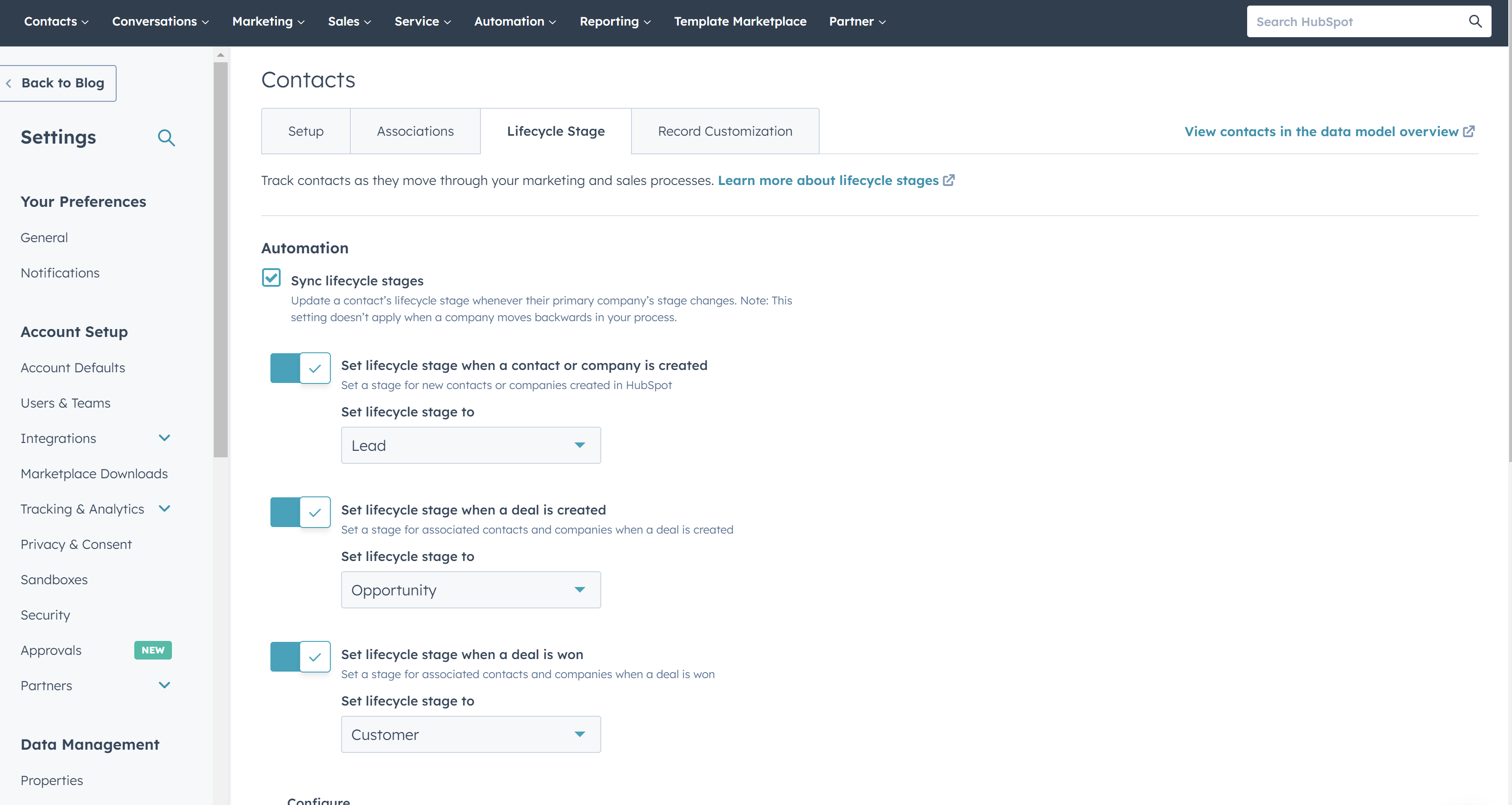
You can also edit the lifecycle stage value that will be set for contacts at three different milestones during their journey:
- Set the lifecycle stage when a contact or company is first created
- Set the lifecycle stage when a deal is created
- Set the lifecycle stage when a deal is won
This video walks through managing these settings in more detail
How to Update Lifecycle Stages for Contacts and Companies in HubSpot
To keep the lifecycle stage property updated, you can do the following:
From the contact record, locate the lifecycle stage and simply click to change it. Hopefully this isn't used often, as you'll want to automate the process.
- Import to update the lifecycle stage property for a list of contacts
- Use "set a property value" action in a workflow (Professional or Enterprise accounts only)
- Use a hidden form field (Marketing Hub Professional or Enterprise only)
How Are HubSpot Lead Statuses Used?
Lifecycle stages are important, but lead statuses let you dive deeper into the details of your funnel. Lead status is typically thought of as a subset of SQL.
The lead status property can provide valuable information to your team, as you segment leads based on where they stand in their buyer's journey.
While the lifecycle stage property in HubSpot CRM helps to identify where your contacts are in their customer journey, you may need more detail into the status of a contact to truly see if they're a good fit for sales. Knowing a contact is a sales-qualified lead just isn't always enough.
With the lead status property, you can segment your leads based on previous sales activities and prioritize your outreach. Your sales representatives will be able to identify the leads in their funnel and ensure no leads fall through the cracks due to lack of follow-up. You can also then nurture or remarket to people who, at the moment, are not yet ready.
Lead Statuses in HubSpot
There are default lead statuses in HubSpot: New, Open, In Progress, Open Deal, Unqualified, Attempted to Contact, Connected, and Bad Timing. However, unlike lifecycle stages, lead statuses can be customized to fit the exact needs of your business. Many companies use additional custom statuses such as "disqualified" or "recycled" on top of what is already built into HubSpot.
Below is an example of lead statuses for a B2B company:
- New - contacts that have reached SQL, but are new to the sales team
- Attempting to contact - initial outreach sequence
- Connected - contacts that have connected with the sales team
- Working - Open Deal - open deal, contact is now an opportunity
- Closing - final negotiations and quote issued
- Nurture - enroll into drip campaigns
- DQ - not a fit
Defining Lead Status for Your Organization
It's very important that your entire team - both marketing and sales - is on the same page about what these lead statuses mean and how they are defined. Everyone should agree to a documented set of rules and definitions that is used consistently throughout your process.
Your marketing and sales teams should define your lead statuses in a way that makes sense for you and your team. You'll also need to determine what actions, either manual or automated, occur at each stage of your process in order to change a lead's status.
Usually, a contact's lead status is either changed manually by a sales rep, or is updated automatically based on a certain action occurring in HubSpot, such as a lifecycle stage change. You can set up these automated actions using workflows.
For example, you can set up a workflow to automatically set a contact's lead status to "New" when a lead's lifecycle stage changes to SQL. You can use an additional workflow to notify a member or leader of your sales team that a new SQL with a lead status of "New" has been created. This will signal your rep to begin their outreach process.
How to Update the Lead Status Property in HubSpot
The first step to using the lead status property is to ensure it's always updated. Here are some tips for this:
- Manually update the lead status property for your contact
- Import to update the lead status property for a list of contacts
- Use "Set a property value" action in a workflow
- Use a hidden form field
Visualize Your Pipeline with HubSpot Deal Stages
Think of HubSpot deal stages in your pipeline as "lanes" across your CRM that represent the phases of your sales process. Your first deal stage typically begins post-marketing handoff - that is, a deal begins when marketing hands off the lead to the sales team, the sales team accepts the lead, and it moves to the opportunity stage to be worked.
Deal stages come in handy because they help you to visualize your deals pipeline across your entire sales organization.
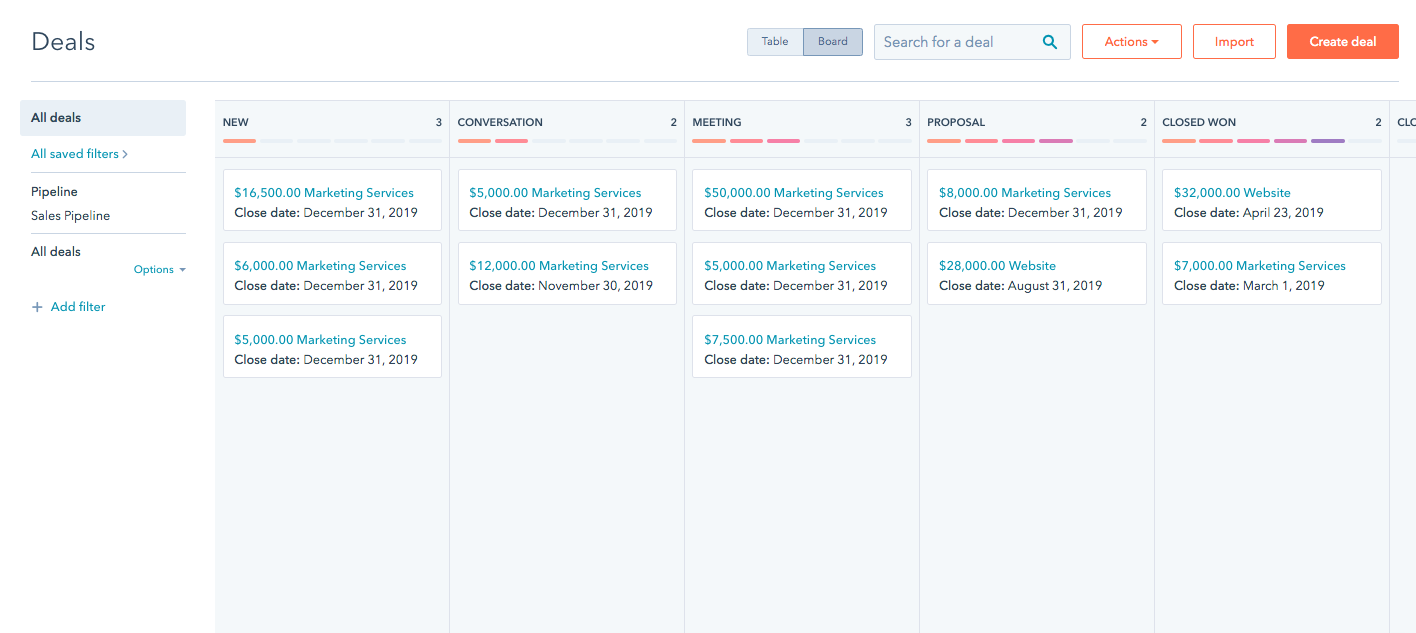
Visualization of your pipeline means immediate boosts in transparency and accountability across your sales organization. You'll see almost immediately where bottlenecks occur, setting you up for quick and efficient resolution of identified issues.
For best results, make sure you are only creating deal stages for phases of your sales process that every prospect moves through, in order, without exception. If you have any optional steps, or steps that tend to occur at different times depending on the deal, you should designate these as tasks in HubSpot, rather than define them as deal stages. This will allow prospects to continue to fluidly move through your process while still meeting all of their requirements to become a customer.
Every company defines its pipeline stages a bit differently, but the most successful sales organizations follow some general best practices.
Define Deal Stages Based on Your Prospect's Action
Create deal stages based on a concrete action that a prospect takes. For example, "Discovery Call Scheduled" or "Presentation Scheduled." By aligning your deal stages with concrete actions your prospects have committed to, you'll get a cleaner, clearer representation of your pipeline.
Use Multiple Pipelines
Use multiple pipelines to represent your different sales processes. HubSpot Professional and Enterprise users have the ability to create multiple pipelines.
Assign "Likelihood to Close"
Assign "likelihood to close" percentages to each deal stage to make your forecasting easy and accurate.
Require Properties at Each Deal Stage
Use required properties at each deal stage. This means that certain information must be filled in for a deal to move to the next deal stage. Common required properties that come in handy include deal amount, primary point of contact, product or service, and more.
Tying Together HubSpot Lifecycle Stages, Lead Statuses, and Deal Stages
When you take the time and effort to properly set up lifecycle stages, lead statuses, and deal stages, you'll have set yourself up for a successful, sustainable, and scalable marketing and sales process. Setting up these three types of properties allows you to easily identify opportunities for automation and also provides you with full transparency into your marketing and sales funnel so that you can quickly spot and resolve issues and impediments that arise.
Setting up your lifecycle stages, lead statuses, and deal stages sets you up nicely for powerful automation opportunities. Here are some simple automation hacks you can implement right away using HubSpot workflows:
- Automatically assign a Lead Status of "New" when a lead is deemed as an SQL to kick off your sales process.
- Automatically create a deal in your first deal stage when a lead reaches Lifecycle Stage "Opportunity."
- Automatically set a projected close date for any new deal that is created.
- Automatically set a projected deal amount for any new deal that is created.
- Automatically assign new deals to a designated rep based on territory, product interest, or other factors.
- Automatically trigger emails to send necessary paperwork to your prospects when they reach a certain deal stage.
- Automatically send internal reminders for follow-up when leads hit a certain Lifecycle Stage or Lead Status.
- Send an automated list of new marketing-qualified leads to your sales team leaders on a regular, recurring basis.
- Send an internal alert if a deal is progressing more slowly than expected.
Mapping your lifecycle stages, lead statuses, and deal stages in HubSpot also sets you up nicely for segmentation, reporting, and optimization. You can easily sort your database according to any of these properties, allowing your marketing and sales teams to take an ultra-tailored approach to communicating with these contacts. With the power of HubSpot you can also effectively track lead sources.
The same goes for reporting. With these properties nicely mapped, you'll be able to run reports and put together dashboards to give you a high-level view of your sales and marketing funnel.
To learn more about how all of this is possible, get familiar with revenue operations in HubSpot.



